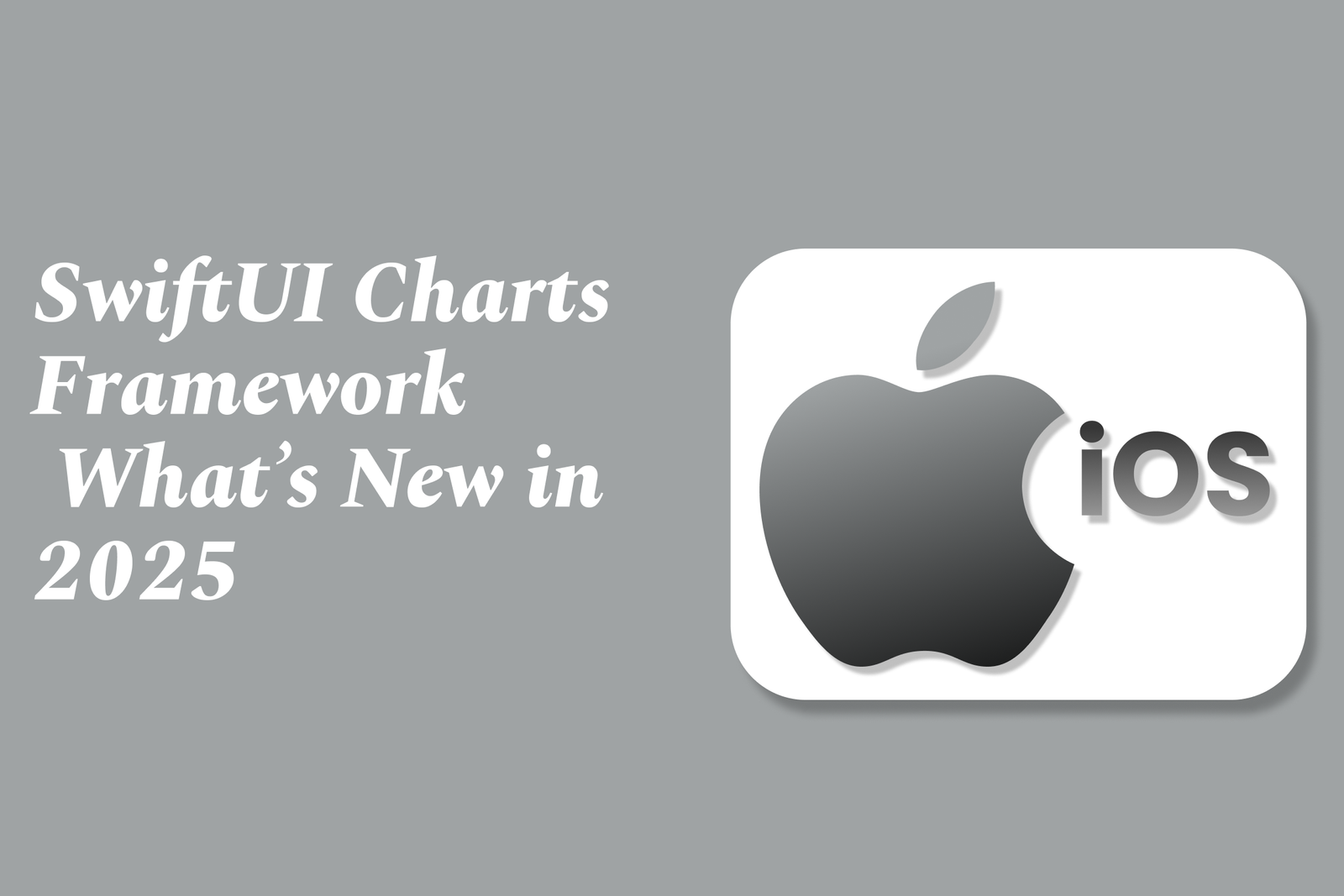SwiftUI Charts Framework: What?S New In 2025
The SwiftUI Charts Framework in 2025 introduces dynamic, glass-like visuals with enhanced interactivity, new chart styles, improved animation support, and seamless integration with SwiftUI’s Liquid Glass design system—elevating data visualization for Apple platforms.
SwiftUI Charts Framework: What’s New in 2025
1 ) Introduction to SwiftUI's 2025 Update
Apple's 2025 update introduces a sweeping redesign called Liquid Glass, which enhances the visual and interactive experience across apps built with SwiftUI. The framework now supports a glassy, rounded, and transparent aesthetic with minimal code changes required when using Xcode 26.
2 ) Liquid Glass Design System
Combines optical qualities of real glass with fluid, dynamic behavior.
Features real time rendering with specular highlights and light bending.
Controls adapt contextually by morphing and reshaping as users navigate.
Intelligent color adaptation adjusts based on content and ambient lighting.
Responsive lensing at edges introduces depth and visual separation while maintaining transparency.
3 ) Navigation and Tab Enhancements
Though navigation stacks API remains unchanged, TabView receives new APIs aligning with the Liquid Glass design, improving user experience.
The new Tab API supports roles, such as `.search`, allowing special placement like positioning the search tab at the screen's bottom separately from other tabs.
Developers are encouraged to refactor older TabView implementations to leverage these enhancements fully.
4 ) Toolbars and Buttons Revamped
Toolbars are now glassy by default and often split into groups, greatly supported by the new `ToolbarSpacer` type for spacing within toolbars.
Introduction of `GlassButtonStyle` allows buttons to adopt the new glassy look via `.buttonStyle(.glass)`.
A `glassEffect()` view modifier is available to apply glassy effects to custom views effortlessly.
5 ) Rich Text and Web Support Expansion
SwiftUI now supports attributed strings within the `TextEditor` view, enabling rich text editing capabilities previously unavailable.
WebView integration has been introduced, allowing embedding and displaying web content directly within SwiftUI apps.
6 ) VisionOS and 3D SwiftUI Views
New SwiftUI APIs facilitate embedding widgets into visionOS and CarPlay environments, supporting spatial layouts, animations, and state management for 3D apps.
Enhanced interoperability between SwiftUI and RealityKit allows seamless blending of UI and 3D graphics to create immersive experiences.
7 ) Developer Tools and Simulators Upgraded
Xcode Simulators receive improvements such as design comparisons, showing rulers/grid, quick build actions, and recording capabilities with touch and audio for easy sharing.
Bezel support for screenshots and videos enhances presentation and demonstration of app designs.
Summary:
The 2025 SwiftUI release brings a transformative redesign with Liquid Glass, modernizing the UI across Apple platforms with transparent, dynamic visuals and improved interaction models. Navigation, tabs, toolbars, and buttons adapt to this new style while enhanced APIs empower developers to build immersive 3D experiences on visionOS and beyond. Added support for rich text editing and web content integration further enrich app capabilities, making this update a significant evolution in the SwiftUI framework.
https://justacademy.in/news-detail/android-data-privacy-changes-in-2025
https://justacademy.in/news-detail/flutter-vs-maui:-desktop-race-heats-up
https://justacademy.in/news-detail/how-ios-19-improves-app-privacy-controls
https://justacademy.in/news-detail/flutter-theme-extensions-in-latest-version
https://justacademy.in/news-detail/flutter-native-compilation-for-web
Related Posts
Java supports GDPR and data privacy by enabling secure data handling through encryption, controlled access, and precise data management. It allows developers to minimize PII exposure, ensure data confidentiality, and design workflows that comply with data protection regulations effectively.
Java code quality tools have evolved to include advanced static analysis, integrated security checks, and AI-powered code reviews. These updates help developers detect bugs, enforce coding standards, and enhance security, streamlining the development process and improving overall code reliability.
Java remains a cornerstone in big tech companies, evolving with modern features like records, pattern matching, and virtual threads. Its robust ecosystem, enhanced performance, and growing AI integrations keep it vital for both legacy systems and innovative new projects.
Java and CI/CD pipeline optimizations streamline Java application development by automating builds, tests, and deployments. They improve efficiency through parallelization, caching, and secure secrets management, enabling faster feedback loops and more reliable, scalable software delivery.
Java supports modern cryptography standards through its flexible Java Cryptography Architecture (JCA), enabling integration of advanced algorithms like AES, EdDSA, and post-quantum tools. Libraries like Bouncy Castle offer FIPS-certified, hardware-accelerated implementations for secure development.
Java 23 enhances record patterns by enabling concise, direct destructuring of record components within pattern matching, simplifying type checks and data extraction. This improvement boosts code readability and expressiveness by reducing boilerplate in handling immutable data classes.
Java remains a top choice for mobile app backends, powering scalable, secure, and high-performance server-side solutions. Latest trends include cloud-native microservices, reactive programming, and enhanced JVM optimizations, enabling efficient, flexible, and robust mobile backend development.
Java SE 24 and LTS Java SE 21 offer enhanced features and performance, while Apache Spark 4.0.0 introduces Scala 2.13 support and advanced ML and SQL capabilities. Together, they empower developers to build scalable, high-performance data applications with modern tools.
JUnit 5 modernizes Java testing with a modular architecture, improved assertions, and seamless Java 8+ support. Beyond JUnit, tools like Mockito and AssertJ enhance mocking and assertions, creating a powerful, flexible ecosystem for writing clean, efficient Java unit tests.
Java plays a pivotal role in cloud automation tools by providing a robust, platform-independent language used to build scalable automation frameworks like Jenkins and Selenium, enabling efficient CI/CD pipelines, testing, and orchestration across diverse cloud environments.










